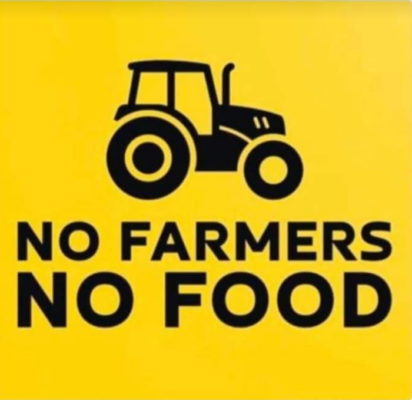Hundreds of millions of pounds of beef are imported into the US every year. Consumers believe because an American company is on the label, the beef is from the USA. As US farmland disappears, we slow down on exports with dwindling farms, imports are rising. The main sources of imported beef are from Australia, Brazil, Uruguay, and other countries.
Even if the label says “USA,” it only means some value was added to the meat in the US. Slicing, packaging, and shipping all qualify it to have the label “product of USA.” That means the cow may have been raised and slaughtered in another country under their rules, not our USDA and FDA rules. There is no way to know…
During the last millennial, there’s been a move from local farms to grocery store food produced in mass quantities. This brought about additives, coloring, fillers, and chemical preservatives. You need a chemistry degree to try and figure out the ingredients. Yet, we trusted the USDA and FDA to do right by us. At fIrst many chemicals were used as preservatives. Then “natural spices or flavoring was labeled without details of what exactly they were. We bought the food anyway.
We want to thank Julie P. for this Contribution – Please direct yours to Steve@GraniteGrok.com.
You can review our ‘Op-Ed Guidelines‘ on the FAQ Page.
Remember “mystery meat” at school lunch? Today, supermarket meat is a mystery. You don’t know if the animal was fed growth hormones, antibiotics, and during processing, preservatives, red dye 40 coloring, Pink slime fillers, carbon monoxide, or even if the cow was raised in the USA. You won’t find any information on the label. How do you even know if it’s fresh!? They inject carbon monoxide into the air during packaging, then heat seal it to give and keep that fresh reddish pink look. It is banned in Japan and Canada because it can mask spoiled meat and fish, but not here. Much of our meat from Canada, Australia, Brazil, and Uruguay is a long way from farm to table. The USDA and FDA do not require a point of origin on the label as long as it was trimmed or cut in the USA.
Move over cows; there are other options!
Redefine Meat: Lab meat.
The USDA approved lab-grown meat and chicken in June 2023. A factory in Holland prints 500 tons of steaks per month through 3D printers.
The Redefine Meat company will supply printed fillets to German restaurants. Around 110 German restaurants are already buying “meat” from Redefine Meat.
“To begin the process of 3D-pressed meat, scientists biopsy a sample of animal stem cells depending on the desired type of meat: beef, pork, poultry, or even fish. These cells are then subjected to a proliferation process and are immersed in a nutrient-dense serum in a climate-controlled bioreactor. Over several weeks, these cells multiply, interact, and differentiate in the fat and muscle cells that make up the bioink.
This is how a robot arm uses a nozzle to spread this filament of baked meat over each other in thin layers. The arm follows the instructions of an uploaded digital file with computer-aided design software (CAD) to replicate the correct shape and structure of the desired meat. The 3D-printed meat material must be viscose but solid enough to achieve a full structural model of accurate vascularization of tissue depending on the type and cut of meat.” Enjoy your meal! This is the direction the globalist, WHO and WEF are moving toward for “the people.” I’ll bet Bill G (his last name rhymes with hates), doesn’t eat 3D meat or has it in his Hawaii farm/bunker. I doubt any globalists do.
Impossible Foods (impossible burger)
Plant-based meat: Impossible Burger and Beyond Meat sell plant-based concoctions. Using soy, oils, minerals or proteins, flavors, fats, and binders to imitate ground beef. An ingredient called “Heme”, a gene made using yeast and genetically engineered, that gives it the flavor of beef, is controversial for vegans and possible health risks. One has to wonder if the efforts and “processing” involved in an “impossible” burger are more about the “feels” than healthy eating!? Their biggest hype is no animal was hurt and saving the planet. Highly processed food, such as Impossible Burger, reports trouble with digestion due to a lack of enzymes to digest certain carbs and soy. The amount of water used and other environmental impacts in processing have become a question that remains unanswered.
I’m not a geneticist, chemist or biologist, just a consumer looking for answers. I encourage everyone to do their own research and ask questions about their food source. I’m not saying any of the following is safe or not. Just saying you may want to know where your food comes from, when, and how. I’ve been buying beef from a neighboring farm for many years. There is a distinct difference between store beef and the beef I buy from them. The hamburger is infinitely better! The cows are grass-fed and a mixture of silage treated very well, live in open pastures and have shelter. Their fecal waste is made into highly sought-after fertilizer. Every part of the cow is used for byproducts. When their time comes, they are ethically euthanized, and a New Hampshire USDA butcher processes the meat.
Save a farm and buy local!
